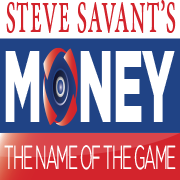 Mesa 3/1/2018 11:00:00 AM
Mesa 3/1/2018 11:00:00 AM
News / Finance
Choosing Suitable Funds

: Your diversified portfolio is likely to be one-of-a-kind because the unique combination of factors that define your goals, timeframe, and risk tolerance won’t be exactly the same as any other investor’s.
Mutual Funds
Provides diversification
May not be focused
May not be fully invested
Index Funds & ETFs (Exchange Traded Funds)
Seek to replicate index results
Transparency
May be more tax efficient
Poor performance in down market
Individual Securities
Investments must be balanced
Need a varied, representative sample
Can be costly to diversify
Performance must be monitored
Managed Accounts
Professional management
Advantage of multiple managers
When you invest for retirement, you can select a portfolio of individual securities, mutual funds, and ETFs or choose a target date fund. Its objective is to build and then preserve assets, so that investors in the fund can look forward to a more financially secure retirement. To meet its goal, a target date fund assembles and regularly realigns a port- folio of individual mutual funds to: Help manage investment risk without significantly reducing return during the fund’s growth phase. Try to provide continued, if some- times modest, growth during the fund’s income-producing or asset-preservation phase
Since cost has an impact on your return, you’ll want to compare the expense of buying and holding various investments. As a rule, no-load mutual funds with low annual expenses, ETFs that you buy for a modest or no commission and hold for an extended period, and individual securities you buy and hold in the same way are generally the least expensive.
Contributions from the book Guide to Understanding Life Insurance in this press release are used with permission from Light Bulb Press.
